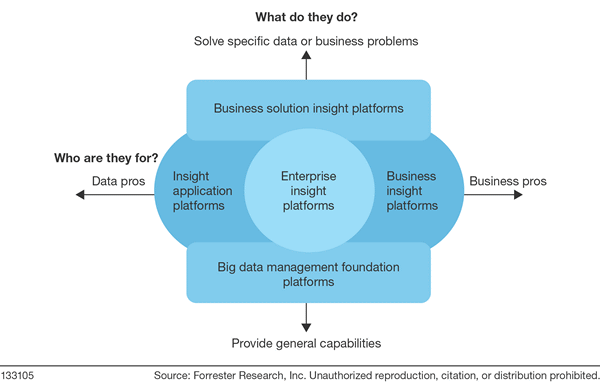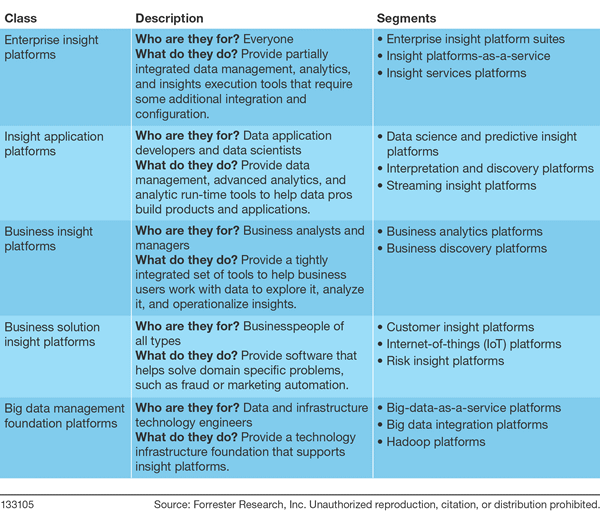Tame The Beast: Forrester’s Insight Platform Vendor Landscape
The mix of analysts who showed up to a recent Cambridge Semantics briefing illustrates a big problem data and analytics technology buyers have – too many data and analytics solutions and a ton of overlap. For example, of the five analysts who came:
-
One saw Cambridge Semantics as a text analytics tool — and that is true.
-
Another saw it as a search tool — and that too is true.
-
A third viewed it as a cognitive analytics tool — and that is true as well.
-
A fourth came because it was a “BI” tool . . . see my point?
The problem is not that vendors are doing too many things. It’s that our old way of thinking about data analytics technology is broken. Labels like search, BI, and predictive analytics have grown stale. For example, Apache Kafka just added in a streaming analytics component; search vendor Maana added in predictive analytics; and BI vendor Looker has a model governance capability. Datameer has shifted its focus from BI-on-Hadoop to data preparation and now, logically, is adding data governance. It goes on and on. Vendors just aren’t staying in neat swim lanes anymore. Open source big data technology and cloud have made it too easy to blend capabilities. Need predictive analytics? Just optimize your solution to run R, and voila! Several big-data-as-a-service vendors have done this.
In fact, to see how far this has gone, we ran a survey of 143 vendors in the data analytics market, and we asked what they did. Fifty-five percent said they had data management, analytics, and technologies to help implement insights in software. Forrester calls these insight platforms (see my blog):
Insight platforms unify the technologies to manage and analyze data, test, and integrate the derived insights into business action and capture feedback for continuous improvement.
Recognize the trend — vendors have shifted from tools to platforms. I talk about this in my report The Platform Explosion: Harness It Or Lose Agility. However, just calling all these tools insight platforms doesn’t really help either. I get it. In the report I just published, Vendor Landscape: Insights Platforms, Q3 2016, Forrester defines five insight platform classes, each with several segments, based on who the platform serves and what it does. I hope the figures below from the report will help you start to sort out the mess.


The so what this means is:
-
Insights-driven businesses are stealing customers from firms that are merely insights influenced. (Check out my blog on this and James McCormick’s blog, where he talks about the difference between insights-driven and insights-influenced. Love it!)
-
The secret weapon of insights-driven business are insights platforms. All the insights-driven masters we identified had built insight platforms. Now data analytics vendors are bringing the concept to everyone else by blending and expanding what they do.
But hey, it’s early days here, so it’s buyer beware. I am doing a Forrester Wave™ on enterprise insight platform suites; expect to see that later this year.
